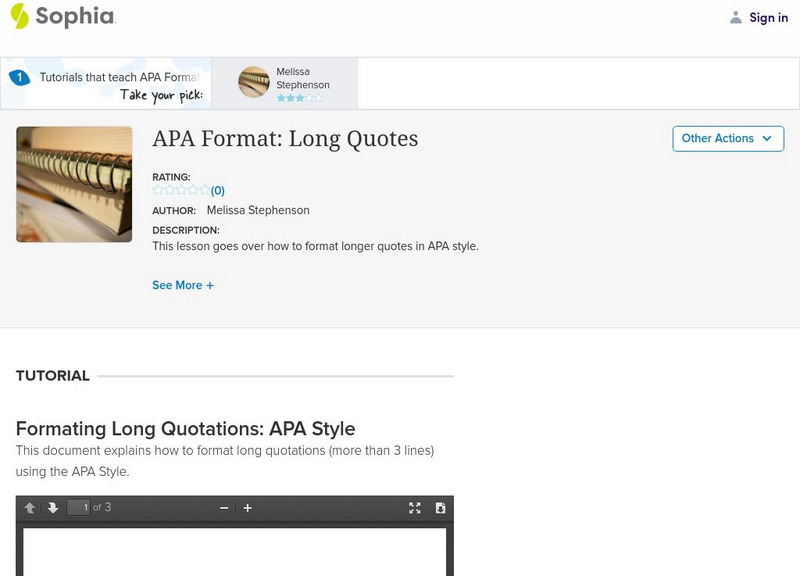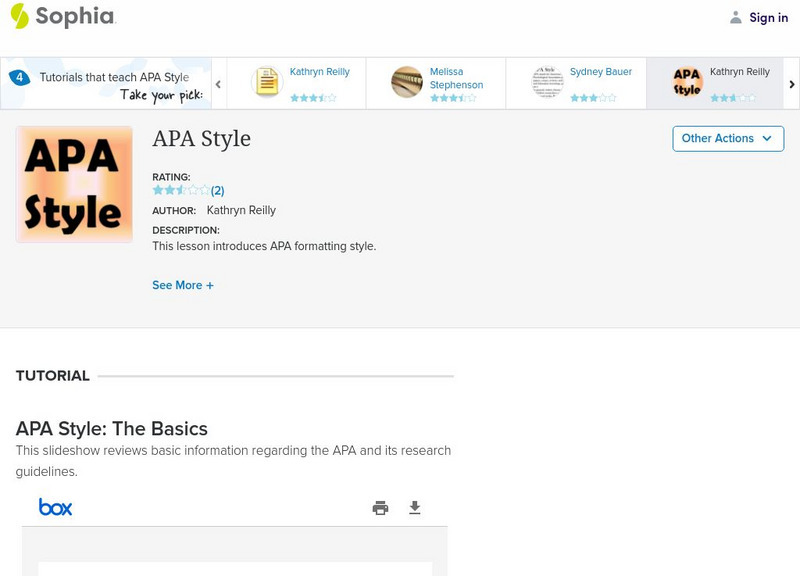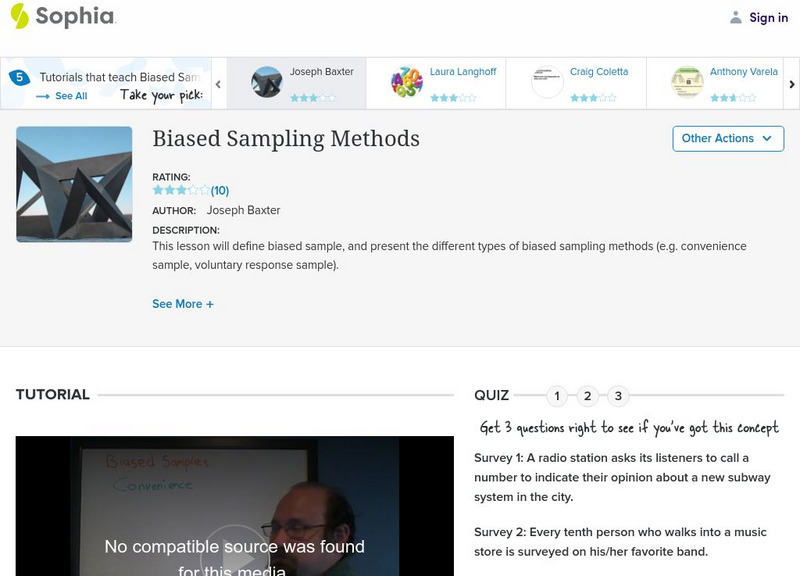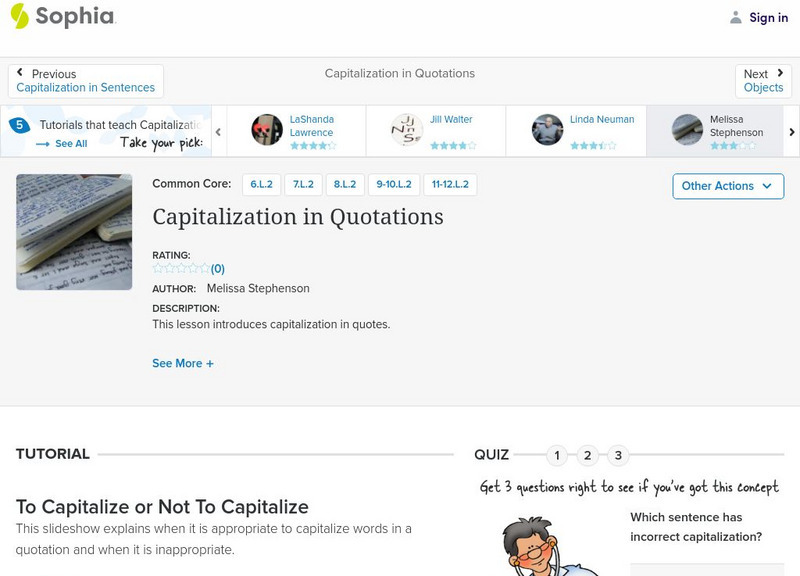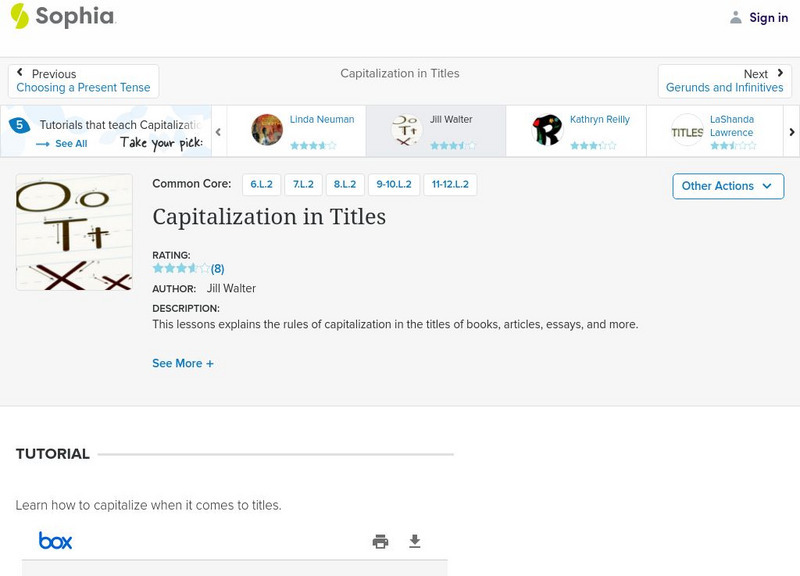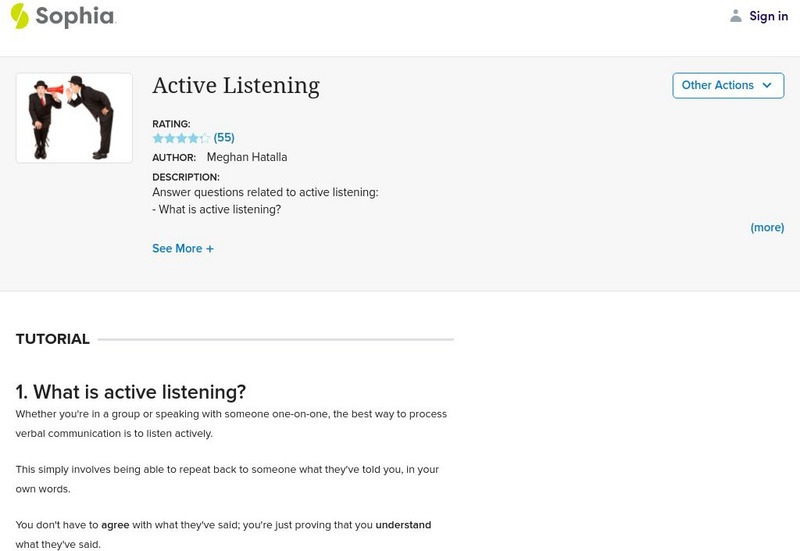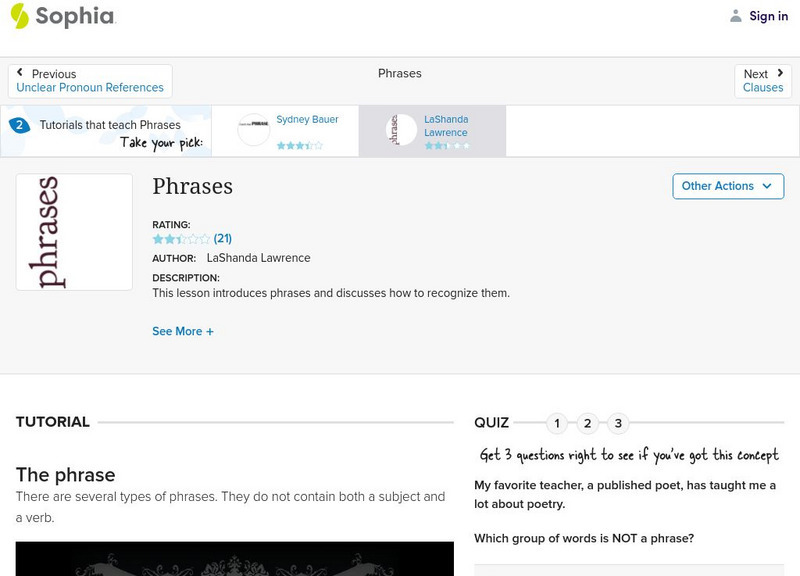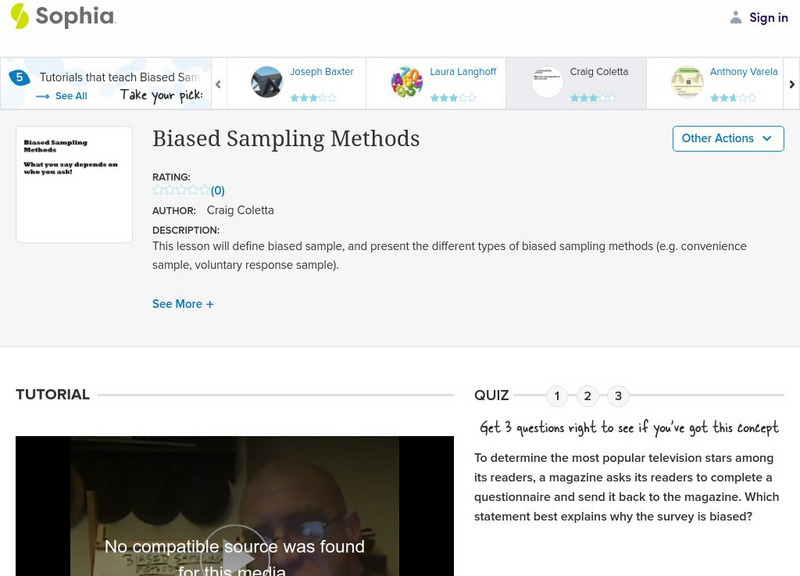Hi, what do you want to do?
Sophia Learning
Sophia: Apa Format: Long Quotes
A three page printable document of notes followed by a screencast lesson [4 mins, 55 secs] explaining how to format long quotations using the APA style.
Sophia Learning
Sophia: Apa Format: Short Quotes
A five-page printable document followed by a screencast lesson [6 mins, 31 secs] explaining how to format short quotations using APA formatting.
Sophia Learning
Sophia: Apa Style
Five slides introducing APA style of formatting and discussing some of the guidelines it establishes for research papers.
Sophia Learning
Sophia: Apostrophes: Tutorial
In this slideshow tutorial, the punctuation topic of "the apostrophe" is reviewed. Each slide provides a different purpose for using an apostrophe.
Sophia Learning
Sophia: Apostrophes and Possession
Six slides introducing apostrophes and how they can be used properly with singular and plural nouns to show possession.
Sophia Learning
Sophia: Appropriate Language
Students can learn how to use language appropriately through these notes on pretentious language, nine presentation slides on using jargon, eleven presentation slides on cliches in writing, and a video also about cliches. [2:00]
Sophia Learning
Sophia: Articles
A screencast lesson [5 mins, 52 secs] introducing articles and their proper usage and providing examples of articles functioning within sentences.
Sophia Learning
Sophia: Asyndeton & Polysyndeton
A screencast lesson [4 mins, 28 secs] defining and providing examples of asyndeton and polysyndeton and discussing their purpose in sentences.
Sophia Learning
Sophia: Auxiliary Verbs
This slideshow lesson focuses on auxiliary verbs including the definition, examples, and purposes.
Sophia Learning
Sophia: Beginning Sentences With "But", "And", or "Because"
A screencast lesson [7 mins, 41 secs] explaining when it is and is not appropriate to begin a sentence with the a conjunction.
Sophia Learning
Sophia: Bias
Notes introducing bias and demonstrating how to identify slight, moderate, and strong bias in a text. Notes can be both read and listened to.
Sophia Learning
Sophia: Biased Sampling Methods
Discover the types of sampling methods and explore what biased sampling is. Take a quiz to assess knowledge.
Sophia Learning
Sophia: Semicolons and Conjunctive Adverb
An eight-slide presentation explaining semicolons, their usage rules, and how they are properly used in sentences with conjunctive adverbs. L.9-10.2a Punc/Indep Clause
Sophia Learning
Sophia: Capitalization in Quotations
A six-slide presentation explaining capitalization rules for words inside quotation marks. Examples are provided.
Sophia Learning
Sophia: Capitalization in Title
Six slides explaining how capitalization is used properly in titles including books, essays, articles, movies, and people.
Sophia Learning
Sophia: Active Listening
This tutorial focuses on active listening including what it is and how to become an active listener; a slide show provides the five basic elements of listening. It also offers a video of Alice Walker reading Sojourner Truth's "Ain't I a...
Sophia Learning
Sophia: Phrases
A screencast lesson [3:38] defining a phrase, introducing different types of phrases, and explaining how to recognize phrases within sentences.
Sophia Learning
Sophia: Pronouns
Ten slides introducing pronouns, antecedents, and how they are used in first, second, and third person narration. Examples are provided through sentences and pronoun charts.
Sophia Learning
Sophia: Biased Sampling Methods
Determine what a biased sample is and the types of sampling methods used. Complete the quiz to assess learning.
Sophia Learning
Sophia: Changes in Concentration at Equilibrium
This lesson will provide examples of how to identify an equilibrium shift due to a change in concentration of either reactants or products.
Sophia Learning
Sophia: Factors Affecting Reaction Rate
This lesson will describe the factors affecting reaction rate, including temperature, stirring (agitation), surface area (particle size), concentration.
Sophia Learning
Sophia: Changes in Volume/pressure at Equilibrium
A guided screencast which explains how to identify a shift in equilibrium based on changes in volume or pressure. [6:15]
Sophia Learning
Sophia: Chemical Reactions: Stoichiometry
This lesson on stoichiometry demonstrates how to use a balanced chemical equation to determine the mass of a product given the starting mass of a reactant. [7:55]
Sophia Learning
Sophia: Objects at Rest on an Inclined Plane
Investigate which forces are acting on an object resting on an inclined plane.





